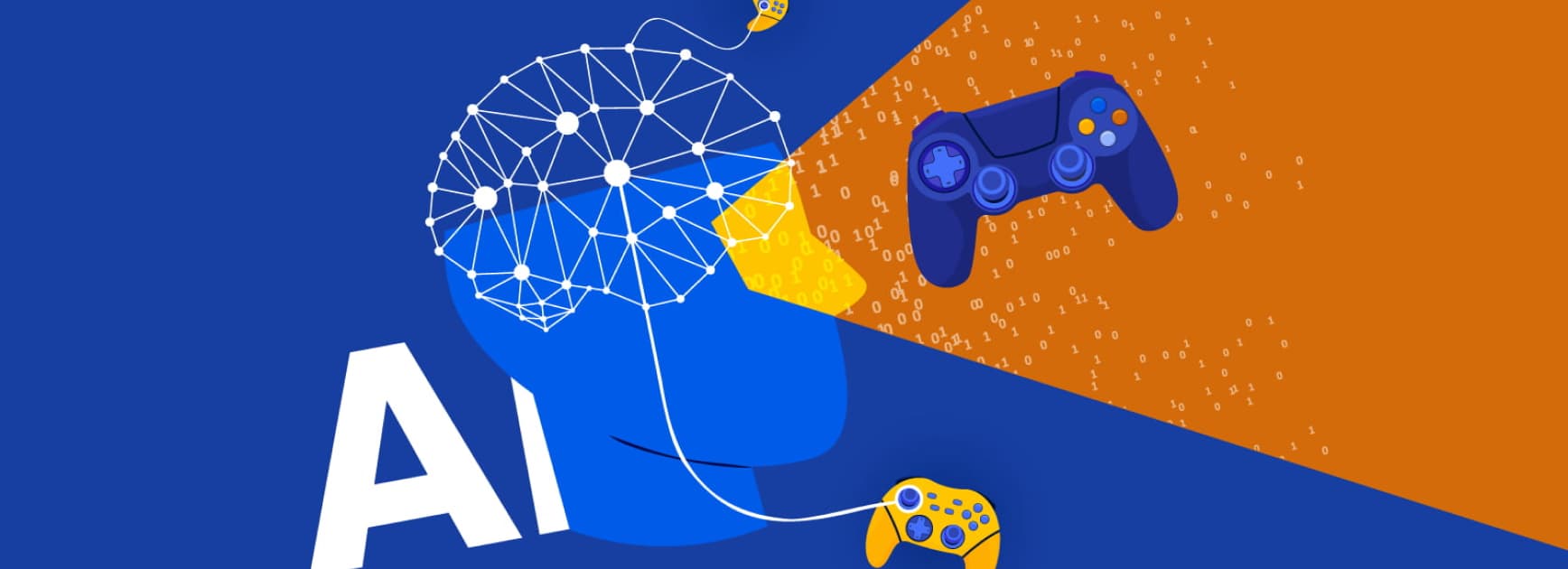Artificial Intelligence in the Gaming Industry

The recent surge in the popularity of neural networks has brought the topic of artificial intelligence back to the forefront. But this time, we’re not talking about ‘Skynets’ or technologies that will soon ‘replace’ humans in IT and other fields. Artificial intelligence in the gaming industry is what many either unfairly forget about or simply don’t know. How developed is it, what can it do, and what is it like?
What is Game AI?
Game artificial intelligence is a set of software tools and instruments that create a compelling illusion of real consciousness within in-game characters and environments. The implementation of AI largely dictates not just gameplay but also the cost of game development. Because of this, the approach to programming game AI (artificial intelligence) greatly differs from that of standard AI.
Take shooters, for example. Game developers intentionally limit the capabilities of AI in terms of shooting. Otherwise, real players would simply stand no chance in a shootout – they wouldn’t even manage to aim at the bot (computer-controlled character), as it would have already ‘killed’ them.
Because of such game contingencies, game AI developers use emulations, deceptions, and various simplifications. But here too, balance must be maintained, because if the AI is too dumb, bots will not be able to act in concert, set up ambushes in shooters – the game will just be boring.
In strategy games and MOBAs, what’s known as a ‘cheating’ AI is often used. It lags behind the player in terms of strategic thinking but surpasses them in available resources, number of ‘lives’, access to information hidden by the ‘fog of war’. Indeed, any game AI could be called cheating, as it inherently has more information about the game parameters than the player. For maximum fairness, AI should receive game data through visual processing algorithms, but today machine vision is still far inferior to human vision.
What Can AI Do in Games?
Perhaps the most obvious examples of artificial intelligence in the gaming industry are the computer-controlled characters. Depending on their level of development and their relationship to the player, they are divided into 3 groups: NPCs. Non-player characters. In most video games, they are neutral or positive towards the player, give out and accept quests, sell items (acting as a merchant), or are used to flesh out the gameplay. Bots. Characters hostile to the player, serving as opponents. In terms of capabilities, strength, damage, and other characteristics, they are close to or even surpass the player-controlled character (depending on the difficulty setting). Mobs. Characters hostile to the player but weaker than them in strength and other abilities. They populate territories and locations, often carrying quest-related and generally useful items. Usually killed by the player to complete certain tasks.
We should note the use of neural networks to control in-game characters. Unlike scripted NPCs that respond to specific actions and player responses, a neural network can simulate the thought process. The bots, mobs, and NPCs it controls are capable of decision-making and dynamically adapting to an ever-changing open world, thus closely approaching a human’s capabilities in the same video game.
This brings us to the other side of the coin – without proper restrictions, the neural network may eventually become too strong.
One striking example is when OpenAI’s neural network faced off against real players in the popular MOBA called Dota2. Over time, through its ability to learn, it began to beat up to 98% of high-level players, thus posing a challenge to the world’s best Dota players. Notably, Dota2 is considered one of the most complex multiplayer video games globally due to a plethora of unique-mechanic characters that one needs to know well and a very high entry threshold.
The Future of Game AI
Despite the mentioned limitations that game developers place on AI, the technology does not stop evolving. In the future, the modernization of game AI could lead to:
- Increased interactivity and dynamism in games, including the creation of open worlds that change in real time in response to player actions;
- Enhanced adaptability of gaming applications – games will literally adjust to the social, geographical, cultural, and other aspects of the player, considering their requests;
- Effective detection of dishonest players, including cheaters, through the analysis of behavioral patterns and searching for suspicious in-game activity among users;
- Creation and development of entirely new game genres and mechanics, including those incorporating educational elements and tools for mastering certain skills.
In the gaming industry, AI can also be useful in the game development stage. The use of AI could automate coding, modeling, debugging, and application support.
The development of artificial intelligence in games may encounter ethical and moral questions. For instance, there will inevitably be the replacement of real-life actors with computer models in video game development. Probably, before a new era in gaming can begin, there will need to be research, discussions, and various difficulties to overcome. Nevertheless, the prospects are there.

